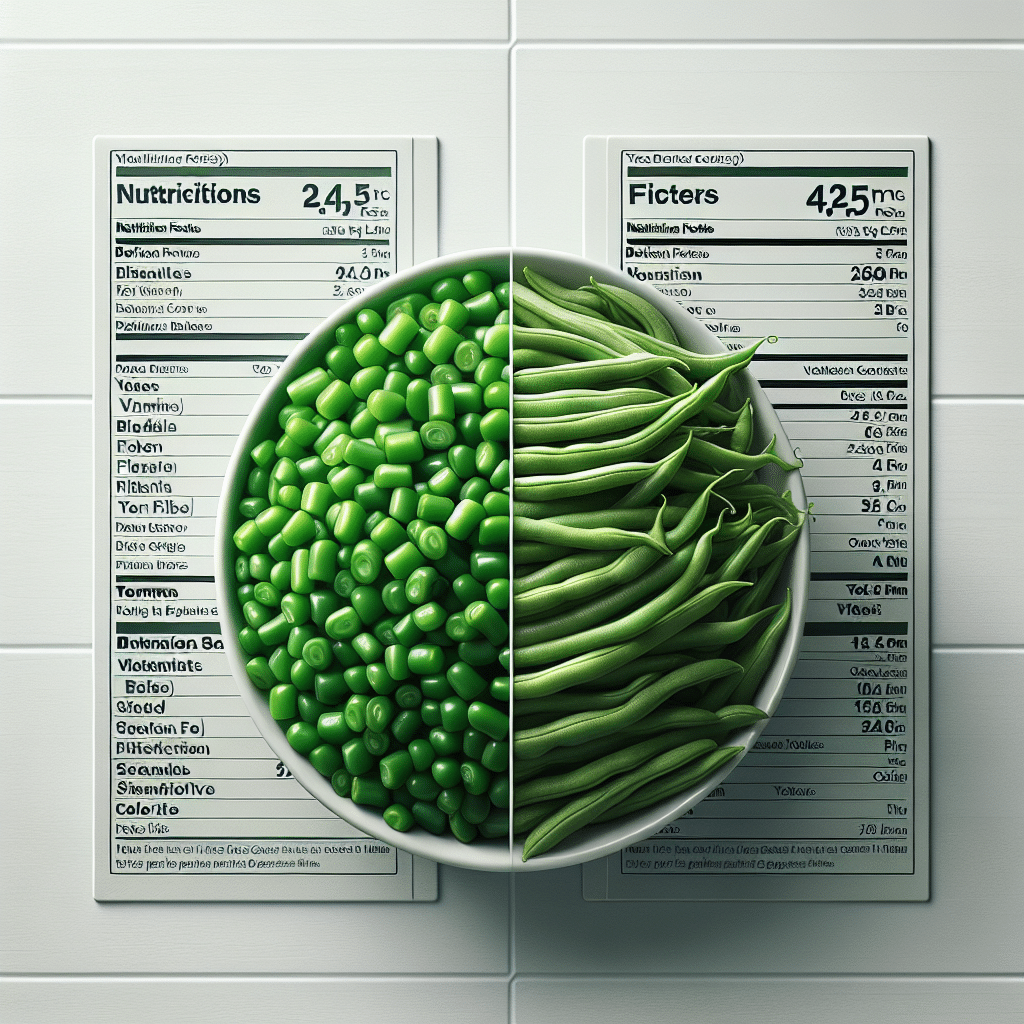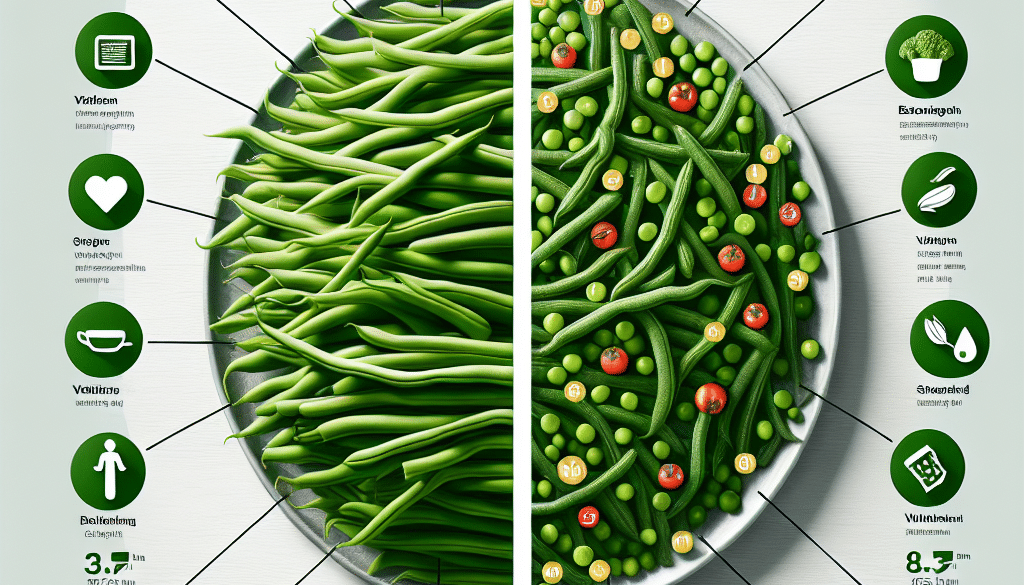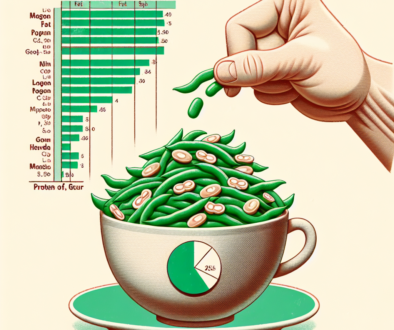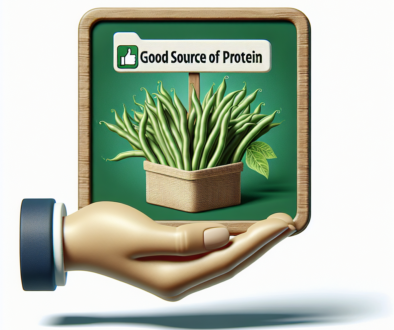Boiled vs. Steamed Green Beans: Nutritional Differences
-
Table of Contents
- Green Beans Showdown: Boiled vs. Steamed Nutritional Differences
- Understanding Green Beans and Their Nutritional Content
- The Boiling Method: Pros and Cons
- The Steaming Method: Pros and Cons
- Nutritional Comparison: Boiled vs. Steamed Green Beans
- Vitamin Retention
- Mineral Retention
- Fiber Content
- Case Studies and Statistics
- Practical Tips for Cooking Green Beans
- Conclusion: Making the Healthiest Choice
- Enhance Your Diet with ETprotein’s High-Quality Protein Products
Green Beans Showdown: Boiled vs. Steamed Nutritional Differences

Green beans, a staple in many kitchens, are not only versatile and delicious but also packed with nutrients. However, the way we prepare our vegetables can have a significant impact on their nutritional value. In this article, we will delve into the differences between boiling and steaming green beans, exploring how each method affects their nutritional profile, taste, and overall health benefits.
Understanding Green Beans and Their Nutritional Content
Before we compare the two cooking methods, it’s essential to understand what green beans bring to the table. Green beans, also known as string beans or snap beans, are rich in vitamins A, C, and K, as well as folic acid and fiber. They also contain minerals like calcium, silicon, iron, manganese, potassium, and copper.
The Boiling Method: Pros and Cons
Boiling is a common cooking method that involves submerging green beans in a pot of boiling water. This method is straightforward and requires minimal equipment. However, boiling can lead to significant nutrient loss, especially water-soluble vitamins like vitamin C and B vitamins. The extent of this loss can vary depending on the boiling time and the amount of water used.
- Pros of Boiling Green Beans:
- Easy and convenient
- Requires no special equipment
- Can cook large quantities at once
- Cons of Boiling Green Beans:
- Potential loss of water-soluble vitamins
- Can lead to a mushy texture if overcooked
- Flavor may become diluted
The Steaming Method: Pros and Cons
Steaming involves cooking green beans by exposing them to steam, usually in a steamer basket over boiling water. This method is often considered superior in terms of preserving nutrients, as the vegetables do not come into direct contact with the water. Steaming can help retain the crisp texture and vibrant color of green beans, as well as their natural flavor.
- Pros of Steaming Green Beans:
- Better nutrient retention
- Preserves color and texture
- Enhances natural flavor
- Cons of Steaming Green Beans:
- May require special equipment (steamer basket)
- Can be more time-consuming for larger batches
Nutritional Comparison: Boiled vs. Steamed Green Beans
When it comes to nutritional content, the cooking method can make a significant difference. Studies have shown that steaming tends to preserve more nutrients compared to boiling. For example, a study published in the Journal of Food Science found that steaming retained more vitamin C in green beans than boiling.
Another study in the Journal of Agricultural and Food Chemistry reported that steaming vegetables like green beans could increase their potential health benefits. The researchers found that steaming increased the total antioxidant capacity compared to boiling.
Vitamin Retention
Vitamin C and B vitamins are particularly susceptible to heat and water. Since steaming exposes green beans to less heat and no direct contact with water, it is generally better at preserving these vitamins.
Mineral Retention
Minerals such as potassium and magnesium are less likely to be lost during cooking compared to vitamins. However, boiling can still result in some mineral leaching into the cooking water, which is often discarded.
Fiber Content
The fiber content of green beans is relatively stable during cooking, whether boiled or steamed. However, overcooking by either method can break down the fiber to some extent, potentially reducing its health benefits.
Case Studies and Statistics
Several studies have compared the effects of different cooking methods on the nutritional content of vegetables. For instance, a study by the University of Parma found that steaming preserved more phenolic compounds in green beans than boiling. These compounds have antioxidant properties and can contribute to overall health.
Statistics from the USDA National Nutrient Database indicate that 100 grams of cooked green beans contain about 35 calories, 2 grams of protein, 7 grams of carbohydrates, and 3 grams of fiber. The exact vitamin and mineral content can vary based on the cooking method used.
Practical Tips for Cooking Green Beans
To maximize the nutritional benefits of green beans, consider the following tips:
- Minimize cooking time to preserve vitamins and minerals.
- Use as little water as possible if boiling to reduce nutrient loss.
- Consider steaming green beans to retain more of their natural flavor and nutrients.
- Avoid adding salt or fat during cooking to keep green beans healthy.
Conclusion: Making the Healthiest Choice
In conclusion, both boiling and steaming green beans have their advantages and disadvantages. However, steaming appears to be the superior method in terms of nutrient retention, flavor preservation, and maintaining texture. While boiling is convenient and suitable for large quantities, it may lead to greater nutrient loss. Ultimately, the best cooking method depends on personal preference and the desired outcome in terms of taste and nutrition.
For those looking to get the most out of their green beans, steaming is the recommended method. By choosing to steam, you can enjoy green beans that are not only delicious but also packed with vitamins, minerals, and antioxidants that contribute to a healthy diet.
Enhance Your Diet with ETprotein’s High-Quality Protein Products
After learning about the best ways to cook green beans for maximum nutritional benefits, consider complementing your diet with high-quality protein products from ETprotein. Their range of organic and plant-based proteins can help you meet your dietary needs while ensuring you consume products that are non-GMO and allergen-free.
Whether you’re looking to boost your sports nutrition, manage your weight, or simply add more protein to your diet, ETprotein has a variety of options to suit your needs. Their commitment to quality and customer satisfaction makes them a top choice for anyone looking to enhance their health and wellness through better nutrition.
About ETprotein:
ETprotein, a reputable protein Chinese factory manufacturer and supplier, is renowned for producing, stocking, exporting, and delivering the highest quality organic bulk vegan protein and plant proteins. They include Organic rice protein, clear rice protein, pea protein, clear pea protein, pumpkin seed protein, sunflower seed protein, mung bean protein, etc. Their offerings, characterized by a neutral taste, non-GMO, allergen-free attributes, cater to a diverse range of industries. They serve nutraceutical, pharmaceutical, cosmeceutical, veterinary, as well as food and beverage finished product distributors, traders, and manufacturers across Europe, USA, Canada, Australia, Thailand, Japan, Korea, Brazil, and Chile, among others.
ETprotein specialization includes exporting and delivering tailor-made protein powder and finished nutritional supplements. Their extensive product range covers sectors like Food and Beverage, Sports Nutrition, Weight Management, Dietary Supplements, Health and Wellness Products, and Infant Formula, ensuring comprehensive solutions to meet all your protein needs.
As a trusted company by leading global food and beverage brands and Fortune 500 companies, ETprotein reinforces China’s reputation in the global arena. For more information or to sample their products, please contact them and email sales(at)ETprotein.com today.














